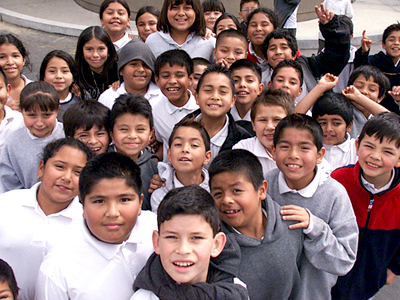
The Hispanic population, while still anchored in its traditional settlement areas, continues to disperse across the U.S., according to a Pew Research Center analysis of U.S. Census Bureau data.
Today, the 100 largest counties by Hispanic population contain 71% of all Hispanics. Los Angeles County alone contains 4.8 million Hispanics, or 9% of the nation's Hispanic population. But the share of all Hispanics who live in these counties has fallen from 75% in 2000 and 78% in 1990, reflecting Hispanic population growth outside of these 100 counties.
About half of these counties are in three states - California, Texas and Florida. Along with New York, Illinois, Arizona, New Jersey and Colorado, these eight states contain three-quarters of the nation's Latino population. But with the dispersal of the U.S. Latino population across the country, this share too is down from 79% in 2000 and 83% in 1990.
In Alameda County, the Hispanic population continues to grow rapidly – 339,889 Hispanics in the county out of a total population of 1,529,875. In 2000, the Hispanic population in the county was 273,910, which was another large increase from the 1990 total of 181,805. Hispanics are currently 23 percent of the population in Alameda County.
The Hispanic population's diversity is reflected in its geography. In the Los Angeles-Long Beach metropolitan area, Mexican-origin Hispanics are the dominant group. In the New York-Northeastern New Jersey metropolitan area, Puerto Ricans and Dominicans are the dominant Hispanic-origin groups, Cubans are the dominant Hispanic group in Miami-Hialeah and Salvadorans are the dominant group in the Washington, DC metro area. Nationally, Mexicans are the largest Hispanic-origin group, making up 64.6% of all Hispanics.
Key facts by state:
• More than half (55%) of the U.S. Hispanic population resides in three states: California, Texas and Florida. California has the nation's largest Hispanic population, with about 14.4 million Hispanics. California's Hispanic population alone accounts for more than one-fourth (28%) of U.S. Hispanics.
• New Mexico has the highest Hispanic population share (46.7% of the state's population) among the 50 states and District of Columbia. Maine, West Virginia and Vermont were among those with the lowest shares.
• Over the last decade, some of the fastest growing Latino populations are in the southeastern United States.
Key facts by county:
• The 10 largest counties by Hispanic population account for almost one-third (30%) of the country's Hispanic population. The 25 largest contain 46% of the nation's Hispanic population.
• Among all 3,143 counties in the U.S., 87 are majority Hispanic. Of those, 56 are in Texas.
Among the key findings by metropolitan area:
• More than four-in-ten (44%) Hispanics live in the 10 largest metropolitan areas by Hispanic population.
• The Los Angeles-Long Beach metropolitan area has the nation's largest Latino population (5.8 million) and alone accounts for about one-in-ten (11%) Latinos nationally. The New York-Northeastern New Jersey metropolitan area is the second largest by Latino population (4.3 million) and is home to 8% of Latinos nationwide.
